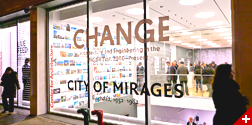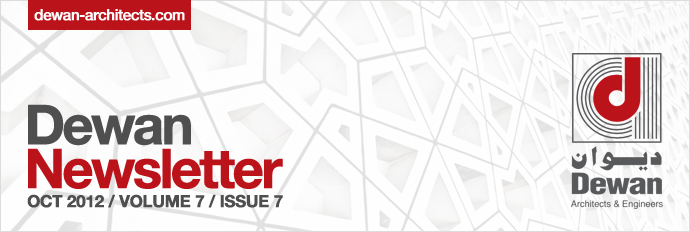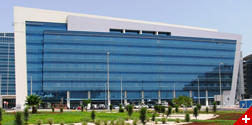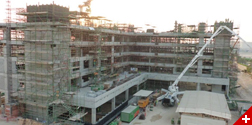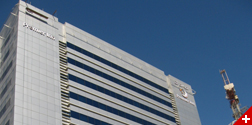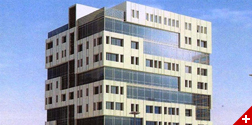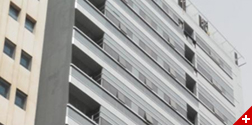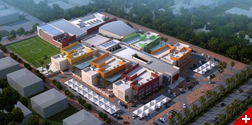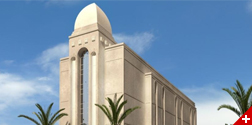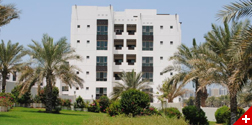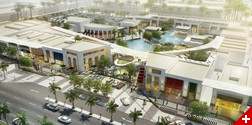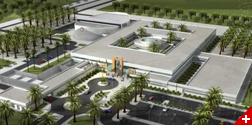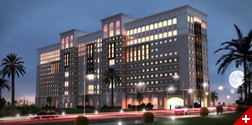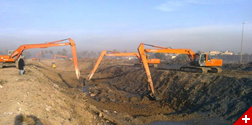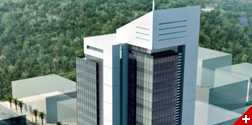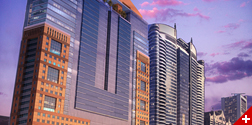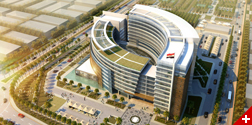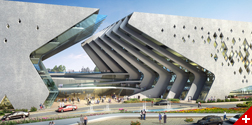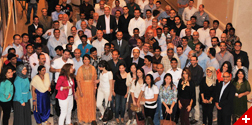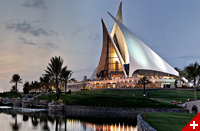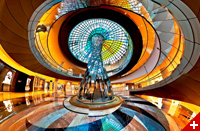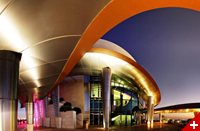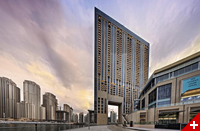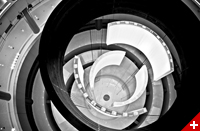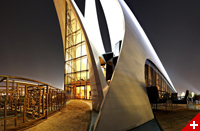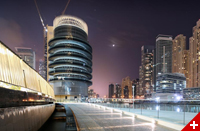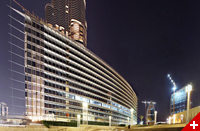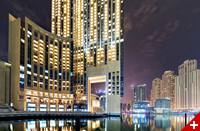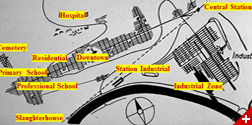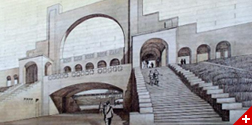Latest News
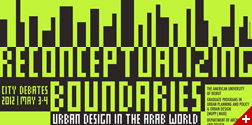 City Debates 2012 - The American University in Beirut
City Debates 2012 - The American University in Beirut
Re-Conceptualizing Boundaries: Urban Design in the Arab World
Dewan Architects & Engineers and Mr. Mohd Al Assam, was a keynote speaker in this event, by reviewing the qualities of Historical Cities in Iraq, and their Urban Form, and following the evolution of traditional Iraqi Settlements and Urban Life, since their early formations, through their glorious epochs, followed by deterioration and neglect thru the last decades.The deterioration of Iraqi Historic Cities was a part of a major collapse of Civil Values and "Rural-ization" of the Urban Life, due to Colonization, Political Unrest and military actions, which disrupts a smooth and continuous civil developments and prosperity.Vast migration from rural areas in masses, which was not possible for the cities to absorb. Neither than to these newcomers to adapt to their new urban life. This resulted in changing of cities to become big villages in fact, with villagers norms and habits, and even spatial hierarchy sometimes. All the above added to the isolation and knowledge gap between Iraq and the modern world, makes it difficult sometimes for non-Iraqis to comprehend the real nature of the problems of Iraqi cities and society, and sometimes deal with the problem from a nostalgic orientalist or theoretical point of view.
Al Assam displayed Dewan's practical interventions in three major case studies of historic cities in Iraq (Kadhimiya / Baghdad, Najaf and Karbala) through our direct involvement after the award of the Urban "Renewal" Projects of these cities to Dewan Office. He also gave a brief historical background of these cities, as "Holy Shrines" Cities, their development, deterioration and status quo. Our Documentation, Surveys and Analysis works in order to reach workable Urban Scenarios and Development Alternatives. Al Assam also displayed major challenges, when working with projects of this delicate nature and scale Spatial: how to accommodate the increasing number of pilgrims in a city that is medieval and still protect the integrity of the urban fabric Political: how to work with the politically layered authority, and different (often contradicted) stake holders Heritage: what is heritage and how to address it? Residents, Visitors or "Bricks"? who has the priority? Al Assam tried to sketch Dewan's visions about, what kind of future we want, and for whom the future we want?.
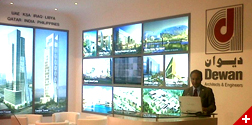 Dewan Solidifies Presence in Lucrative Qatari Market
Dewan Solidifies Presence in Lucrative Qatari Market
Dewan Architects & Engineers, showcased a number of new regional and international projects at the Cityscape Qatar held at the Doha Exhibition Centre in Qatar, May - 2012. Dewan recently entered the lucrative Qatari construction and real estate market with the consultancy contract to design and supervise the construction of the Doha Premier Inn Hotel at Education City, Doha, Qatar. The 4-storey, 200-room hotel is set to open in 2013 at a strategic location within the prestigious Education City master development. Dewan has also recently established its Qatar offices in partnership with Peninsular Venture Group, a leading holding company in Qatar, representing a large portfolio of businesses in various sectors, with investments in manufacturing, construction and real estate. Dewan's participation in Cityscape Qatar forms part of its calculated regional growth strategy in view of the rapid pace of development in the Qatari real estate market. Qatar's successful FIFA 2022 world cup bid has given an additional boost to a market that had already shown a much faster recovery rate than most, after the severe shock that real estate industry the world over received during the economic crisis.
Qatar has introduced over $100 billion in new projects, many of which are already underway including residential, commercial, retail, and hospitality developments, all reflecting Qatar's National Vision for 2030. Cityscape Qatar's selection of conferences, exhibitions, and seminars brought together international, regional and local investors, architects and designers, real estate developers, governmental authorities and senior executives involved in the design and construction of public and private real estate developments from Qatar and internationally, and as such it was one of the region's primary real-estate property events. Dewan presented its most recent regional projects located in Qatar, the UAE, Saudi Arabia and Iraq, as well as its expansion into the international market with projects such as St. Kitts in Carribean. A number of Dewan's top level management represented the company at this year's Cityscape Qatar and met potential clients, strengthened relationships with existing clients and spotlighted Dewan's leading role in the Qatari market.
 Park Hyatt, St Kitts & Nevis - The Caribbean
Park Hyatt, St Kitts & Nevis - The Caribbean
Dewan Architects are developing the designs now for this exotic site. Christophe Harbour is located within the twin-island, English speaking nation of St. Kitts and Nevis. St. Kitts is some 50-70 miles from the popular yacht cruising destinations of St. Barths, St. Maarten, and Anguilla. The site, located on the island's Southeast Peninsula is a short 15-minute drive from the Robert L. Bradshaw airport, which in addition to a private FBO has direct flights from London, Miami, New York, Atlanta, San Juan and Charlotte. Christophe Harbour is comprised of approximately 2,500 acres of dramatic topography including six of the island's most beautiful beaches, 13 miles of coastline, a 300-acre salt pond, and elevation changes from sea level to more than 1,000 feet. The narrow isthmus leading to the peninsula creates the feel of an "island within an island" providing spectacular views of the Atlantic Ocean, Caribbean Sea, and Nevis. Current approvals allow for approximately 2,000 homes, a minimum of 250 hotel rooms, a mega-yacht harbour and marina village; however the development team is continually studying the land to determine the lowest density possible to maintain a successful project.
The current plans provide for approximately 1,500 residences. Dewan proposal for the 5 Star Resort Development, will include the following major components like; Main Pool and All Day Dining Pavilions, Hotel Retail, External Terraces, Pool/Beach Café/ and Sunset Bar, Ball Room, Business Center and Spa with Hot and Wet Treatment. Fitness Center and Jetty. Hotel Rooms with land Bungalows, and on water Bungalows. Villas / Suites (2,3, and 4) bedrooms, Presidential Suites/Villa 4BR, with Room Services and Utilities Support Services Speciality Restaurants, with Casual Dining. Besides a Library/Art Showroom.
.
.
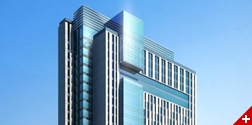 Maso'od Tower, Abu Dhabi - UAE
Maso'od Tower, Abu Dhabi - UAE
The tower occupies an important corner plot in Abu Dhabi and is composed of a basement parking floor, ground and podium floors devoted to retail, and 25 storeys of 1 and 2 bedroom apartment units.The proposed design aims to create an attractive, intelligent and sustainable building, and it was inspired by Sorouh vision, mission and values, which led to the generation of a design characterized by: transparency and flexibility.
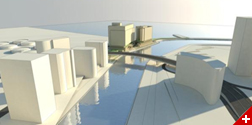 EMAAR Hotel, Dubai Marina - UAE
EMAAR Hotel, Dubai Marina - UAE
Following the market upturn in Dubai and new development by EMAAR Properties, Dewan Architects been appointed to develop a plot located at the Dubai Marina District. The plan is to create a Mixed-use development including Residential Apartments, Serviced Apartments and Retail. The concept is to have each unit showcase an unrivaled view of the sea and the palm. The location of the Plot is at the southwestern tip of the Marina District and it consists of an area of approximately 12,562.43 sqm. The northern face boasts a frontage that includes a private beach, breakwater entry, and a vast view of the sea and the Palm Jumeirah. Vehicular access is possible via service road. The JBR commercial promenade is within walking distance via access of the nearby bridge.
The development will include Serviced Apartments, Retail, and Residential Apartments of 1,2 & 3 bedrooms. The project will be designed in a way that the residential apartments and serviced apartments are integrated within the plot sharing the same amenities hence having a separate entrance. Unique apartments (i.e. duplex units, penthouse units, sky villas, etc) shall be designed with exclusivity, and should have the best views. The design of the project should be at par with the similar developments in the district but would be uniquely done in a way that would separate it from the rest.
.
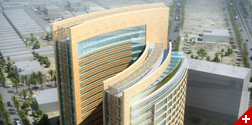 ARAC Hotel & Apts, Al Khobar - KSA
ARAC Hotel & Apts, Al Khobar - KSA
The ARAC 5-star Hotel and Hotel apartments is strategically located in Al Khobar – KSA, along the Prince Turki Highway covering a plot area of 7000 m². The project consists of 207 guestrooms, 224 serviced apartments, dining venues, leisure facilities like a gym and spa, kids club, indoor swimming pool area, retail shops, hairdressing and coffee shops. It has a fully equipped 600 person capacity banquet hall supported by a business center and meeting rooms perfect to host conferences, banquets and exhibitions, spreading over a total built up area of 66,186 m². The concept design is based on having multiple interconnected layers. The layers are joined to create two buildings, one being the hotel and the other the serviced apartments. The first building is 14-storey high and the latter is 15-storey high. The two buildings are connected through the common shared facilities.
This concept provides for two distinguished buildings and entities, through different heights and shapes. The two masses open up with the shape of two wings that greet the visitors along the Prince Turki street and providing a welcoming expression through the shape of the lobby which reflects the Arab hospitality. The Architectural language is adopting the simplicity of design. Thus the style of the external envelope is composed of glass on the upper floors, blended with a layer of screen on the lower floors. To emphasize the two entities of the project, the lifts of the hotel are selected to be a Panoramic travel from the lobby to the upper floors. This project will be the first of three projects for the same client. Two other projects of the same program will be executed in Riyadh & Jeddah.
.
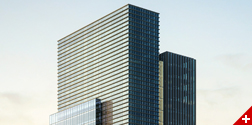 AKH Tower, Dammam - KSA
AKH Tower, Dammam - KSA
Abdul Karim Holding Tower occupies a strategic position in the center of the economically vibrant city of Dammam. The tower consists of 35 stories, some of which will be allocated to be the headquarters of Abdul Karim Group, the rest will be leased as office floors to other companies. The building components includes parking in the basement and 7 podium floors accommodate up to 404 cars, while the upper floors will contain office space and related services. The total built up area of the project is 54,846 square meters with a building height up to 150 meters, in addition to high functional efficiency, the proposed design is characterized by distinctive external form as it aims to create an important architectural landmark in the Kingdom.
.
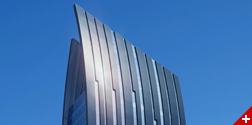 OSA Sons Tower, Jeddah - KSA
OSA Sons Tower, Jeddah - KSA
The OSA SONS Tower is an exclusive new hotel apartment development which will be located by the Jeddah Corniche, and will be an exciting addition to Jeddah's ever growing skyline. The 51 storey tower consists of 33 levels of hotel suits and apartments, as well as a 6 storey parking and leisure podium. The tower also includes restaurants, retail outlets as well as a vast 2 storey underground parking will also be accommodated within the total built up area of approximately 60,000 sqm of the new iconic tower.
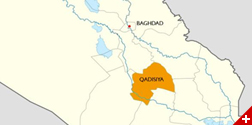 Qadisiya Structural Plan
Qadisiya Structural Plan
Dewan Architects have been awarded another major planning project in Iraq, to prepare the Structural Plan and future development studies for the Governorate of Qadisiya 180 Km south of Baghdad. The Structural Plan is a forecast spatial development study that aims to raise the economic, social and urban level for the Governorate of Qadisiya, with an approximate area of 8153 Sq Km and a population figure of one Million, for the coming 20 years.
The study will cover the following:
- Population and settlements
- Employment and labor
- Resources
- Housing
- Industry
- Trade
- Transport
- Marketing
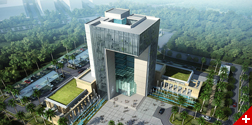 Karbala University HQ - Iraq
Karbala University HQ - Iraq
The project prestigious is located in Karbala, within Karbala University Campus site, covering a site area of 16,000 m². The plot allocated to Karbala University HQ lies in the corner of the Karbala University campus site. To utilize this key location, the design of the building was done to resemble a cornerstone for the campus of the University of Karbala. Regular geometric forms were utilized to convey a graceful image; meanwhile the core was kept hollow to maintain a quality of light and natural ventilation to the central corridors and spaces.The northern corner of the buildings was sculpted with the opening treated with a Spider System glass structure in order to emphasize a welcoming entrance as well as maintain a visual and physical connection with the other buildings in the campus.
The total built-up area of the project is 8,800 m², and it consists of the main administrative building, surrounded by other buildings on the ground level dedicated to the public facilities, such as the conference hall, exhibition areas, prayer halls and the cafeteria.
.
.
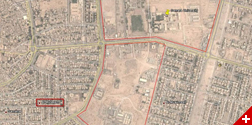 Samara University - Iraq
Samara University - Iraq
As a key player in the major reconstruction efforts of Iraq, Dewan Architects just been awarded the masterplanning and architectural design of a modern, green university campus in Samarra, north west of Baghdad. The project site is about 2.6 sqm and should be developed with high energy efficient and sustainability standards, to house 12000 students and faculty members. The campus will include 16 specialized colleges with state of the arts research centers and laboratories, university HQ and deanship building, conference hall, central library, students and faculty residences, social & cultural centers, sports facilities, mosque, agricultural farms and other service facilities.
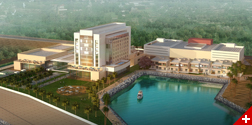 Shatt Al Arab Hotel, Basra - Iraq
Shatt Al Arab Hotel, Basra - Iraq
The project of Shatt Al Arab 5-star Hotel is located in a prime location in the city of Basrah, covering a plot area of 64100 sqm.. The proposed design aims to create a unique hospitality environment based on local traditional architectural flavor with contemporary interpretation, and It is anticipated that it shall be a landmark project within Basra and will position itself as one of the primary hospitality/residential developments in the area. The total built-up area of the project is 45,000 m², and it Consists of the following : 5-star hotel, ballrooms, various themed restaurants, guestrooms, suites and guest amenities & leisure , G+1 Villas, G+2 shopping mall.
.
.
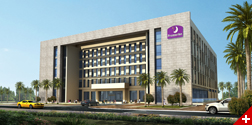 Premier Inn Hotel, Doha - Qatar
Premier Inn Hotel, Doha - Qatar
For the Master developer of Education City Development Qatar Foundation, Dewan is awarded the Design of this project, a 3 stars business/ leisure hotel for Premier Inn Hotels chain. The client is joint venture between Premier Inn Hotels Qatar LLC and Msheireb Properties. The project comprises 219 guestrooms with no suites, distributed on G+4 floors on a plot area of 7,318 sqm. Project's location is at Doha Education City near Exhibition center. Total built-up area for the project is around 10,000sqm. The hotel includes amenities and Leisure and lifestyle utilities such as a modern gymnasium, a swimming pool in addition to the F&B outlets.
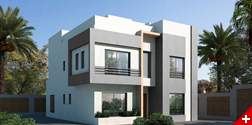 Al Arjan Villas & Apts, Riyadh - KSA
Al Arjan Villas & Apts, Riyadh - KSA
Dewan Architects have recently completed all the design stages of this prestigious project in Riyadh – KSA, and the project now at tendering stage for construction. The Master plan development with an area of 45,900 sqm, has been developed as a gated residential community, comprising of 160 units of 1 BHK, 40 units of 2 BHK, 64 Villas & a Community Center. The site master plan concept is intended to create a family oriented community with attractive environmental facilitated outdoor and indoor services, open yards and landscape features to achieve optimum enrichment of the development for its residents, visitors and surrounding neighborhood.
.
.
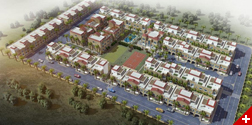 El Seif Residential Compound, Riyadh - KSA
El Seif Residential Compound, Riyadh - KSA
With an overall built up area of 15.234 sq.m, and a total open and play area of 1.420 sq.m, Dewan is awarded the Design Consultancy Services for this project. El Seif is a residential compound, self-sustained community divided into neighborhoods and is composed of an overall BUA 15,234 m2 and play area. Owned by El Seif Engineering Contracting and located at the junction of Al Imam ibn Saud bin Abdul Aziz Road and Khalid bin Waleed Street in Al-Hamra district of Riyadh.
.
The compound is to be constructed on a primary site of an area of 21.193 sq.m and to consist of the following:
- 2 bedroom townhouses (19 Nos.)
- 3 bedroom townhouses (40 Nos.)
- 2 bedroom apartments (20 Nos.)
- Facility block & open play areas. (tennis court, basketball court and swimming pool)
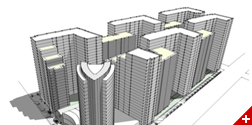 Al Khobar Mixed Use Development - KSA
Al Khobar Mixed Use Development - KSA
Dewan Architects are recently awarded to develop an area strategically located in the center of Al Khobar city on the intersection of King Saud Road & Salaheddin Al Ayoubi Street with a Total Plot Area of 40,000 m2.
.
The Project GFA is anticipated to reach 400,000 m2 to include the following:
- 4* Hotel of Approximately 240 Keys & 45 Serviced Apartments, with 26,000 m2 GFA.
- Offices with 8,000 m2 GFA.
- Luxurious Residential Apartments (2,3,4 Bedroom & Penthouses with approximately 340,000 m2 GFA.
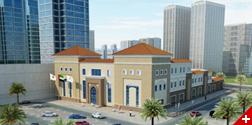 Repton School, Abu Dhabi - UAE
Repton School, Abu Dhabi - UAE
Dewan Architects have recently finished all the design stages of this project, and the project now is being tendered for construction. Repton Foundation School consists of a two story main building which contains classrooms on the ground floor for KG 1&2 and 12 classrooms on the first floor for Grade 1, as well as a service block. It is located on a 6,867 sq.m plot in a prime location on the developing Reem Island which is accessible via bridges linking it to Abu Dhabi, Sowwah and Saadiyat Islands. The site, as well as most surrounding plots, is owned by Sorouh. The school is operated by Evolvence and all areas on the site are designed for private use by students, parents and staff only. The site is gated and contains a single controlled entry and exit point in order to ensure that only designated individuals are allowed access to the school grounds.
.
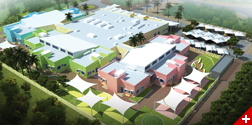 ADEC KG's phase (2), Abu Dhabi - UAE
ADEC KG's phase (2), Abu Dhabi - UAE
Dewan Architects have recently finished all the design stages of the 2nd phase of this project, and the project now is being tendered for construction. Abu Dhabi Educational Council (ADEC) is committed to launching five new kindergarten schools across Al Ain and Abu Dhabi as part of its 'schools of the future' education strategy. Dewan's design for the schools focuses on developing a sustainable learning environment with a vision to establishing a sense of place for these young students. Furthermore, it is a flexible, efficient, safe, cost effective, and sustainable design. Each site has a built-up area of approximately 5,100m2 with each kindergarten school complex designed to accommodate a maximum of 360 Students and 18 classrooms. In each school, faculty and students enjoy facilities such as a library, special education classrooms, physical education facilities, rest areas and a small cafeteria.
There is also a 100m2 nursery included within the school. Educational interactive outdoor learning spaces, parking, support spaces and administration rooms are also incorporated into the animated design that stimulates learning and childhood development. When conceiving the productive vibrant design, Dewan drew inspiration from the community context which the project will serve, and promoting the local culture and maximizing the natural environment was a key objective in the design process.
.
.
.
.
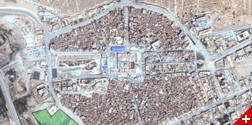 Bahr Al Najaf Hotel, Najaf - Iraq
Bahr Al Najaf Hotel, Najaf - Iraq
Dewan Architects are preparing the Concept Design of this strategically located Hotel on the edge of the Old City of Holy Najaf, with a total built up area of 55,172 m². The project is being developed by the Iraqi branch of the prominent Dubai based real estate development and service related company, Omniyat.
.
Bahr Al Najaf Hotel consists of the following components:
- 4 stars Hotel guestrooms.
- 3 stars Hotel guestrooms.
- Restaurants.
- Public areas.
- Back of house areas.
- Retail mall/souk.
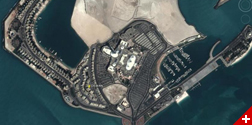 Dewan Abu Dhabi relocated to its new premises in Marina
Dewan Abu Dhabi relocated to its new premises in Marina
Dewan Architects & Engineers Abu Dhabi branch, have recently relocated its offices to the Marina Villas compound in the capital of UAE. The new offices provided ample, healthy and convenient environment to the staff and management, with good conference facilities with clients, and sufficient parking spaces.The present location is close to the Marina Mall, a well known landmark in Abu Dhabi and only a short distance away from the capital centre.
.
